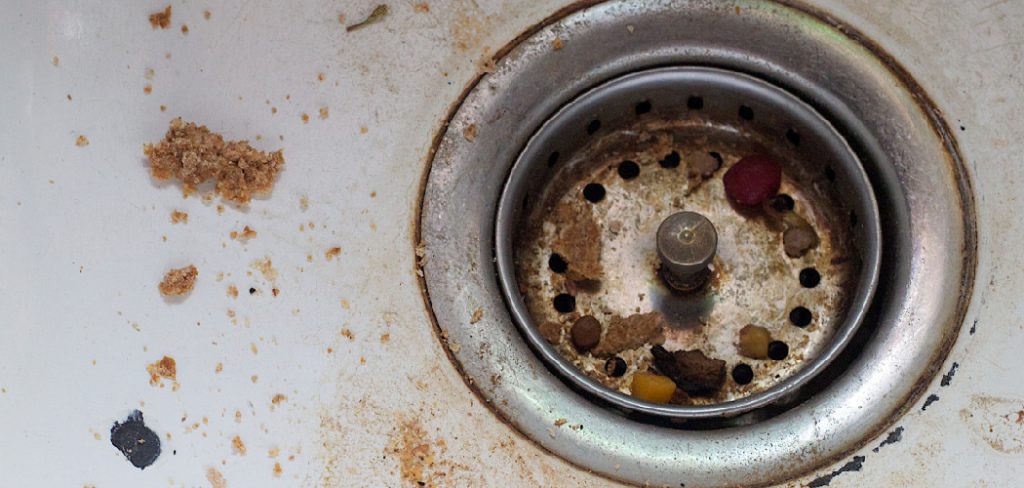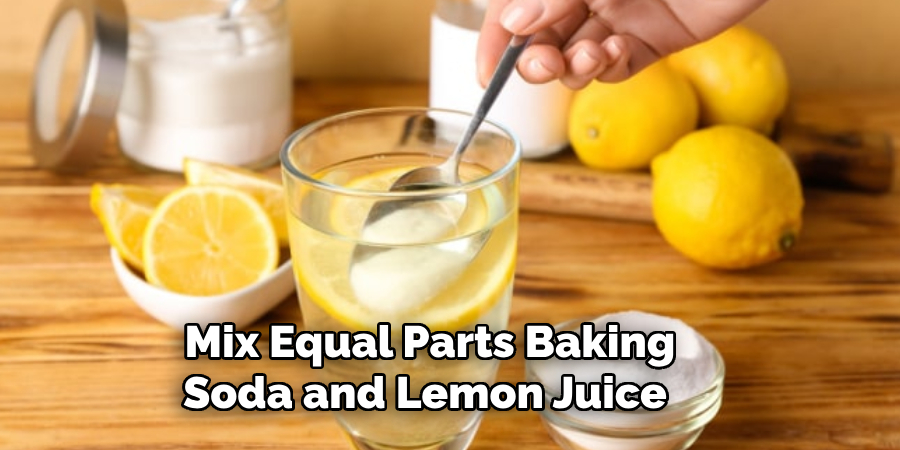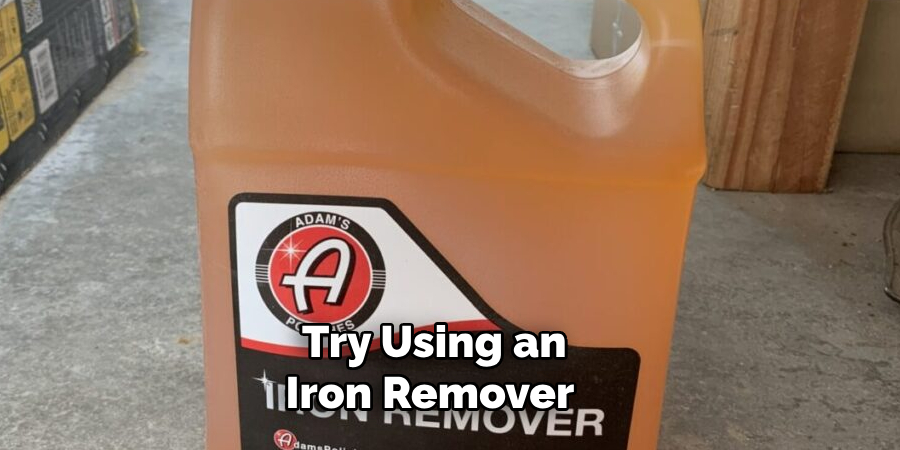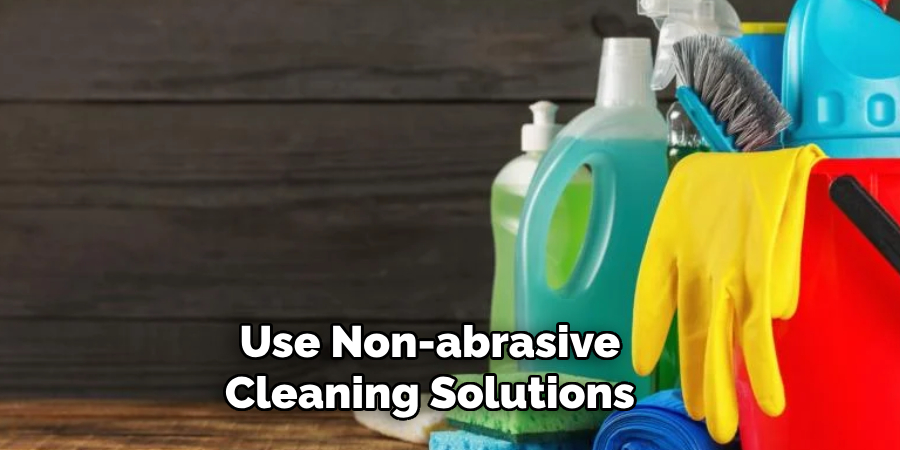Stainless steel sinks are a popular choice for many kitchens due to their durability and sleek appearance. However, over time, even stainless steel is susceptible to rust stains, which can detract from its aesthetic appeal.
Rust development is often caused by prolonged exposure to water or contact with iron particles from cookware or utensils. Removing these rust stains can seem challenging, but with the right techniques and materials, it’s a manageable task.

In this guide on how to get rust out of stainless steel sink, we’ll walk you through various methods to effectively eliminate rust spots and restore your stainless steel sink to its original shine.
Why is Removing Rust Important?
Rust not only makes your stainless steel sink look unsightly, but it can also compromise its structural integrity if left untreated. The rust can eat away at the surface of the sink, causing pits and holes that make it more prone to damage and staining. Additionally, leaving rust stains on your sink for an extended period can make them even harder to remove.
Thus, it’s essential to address any rust spots as soon as you notice them to prevent further damage and maintain the appearance of your stainless steel sink.
Tools and Materials You Will Need
Before we dive into the methods for removing rust from a stainless steel sink, here are some tools and materials you will need:
- Baking Soda
- Lemon Juice or Vinegar
- Salt
- Soft-bristled Brush or Sponge
- Paper Towels or a Soft Cloth
- Rust Remover Solution (Optional)
- Rubber Gloves (Optional)
8 Methods on How to Get Rust Out of Stainless Steel Sink
Method 1: Baking Soda and Lemon Juice or Vinegar
- Mix equal parts baking soda and lemon juice or vinegar to form a paste.
- Apply the paste onto the rust spots on your sink and let it sit for 10-15 minutes.
- Scrub the area gently with a soft-bristled brush or sponge.
- Rinse the sink thoroughly with water and dry it with paper towels or a soft cloth.

Method 2: Baking Soda and Salt
- Mix equal parts baking soda and salt to create a paste.
- Apply the mixture onto the rust stains on your sink and let it sit for 10-15 minutes.
- Scrub the area gently with a soft-bristled brush or sponge, focusing on the rust spots.
- Rinse off the paste with water and dry the sink with paper towels or a soft cloth.
Method 3: Lemon Juice and Salt
- Squeeze lemon juice directly onto the rust spots on your sink. If you don’t have fresh lemons, you can use bottled lemon juice.
- Sprinkle salt over the lemon juice, covering the rust stains completely.
- Let it sit for 5-10 minutes and then scrub gently with a soft-bristled brush or sponge.
- Rinse off the mixture with water and dry your sink with paper towels or a soft cloth.
Method 4: Using Vinegar
- Pour enough vinegar to cover the rust spots on your sink, making sure they are fully submerged in the liquid.
- Let it sit for 30 minutes to an hour, depending on the severity of the rust stains.
- Scrub gently with a soft-bristled brush or sponge and rinse with water.
- Dry the sink with paper towels or a soft cloth.
Method 5: Using Commercial Rust Remover
- If the rust stains on your sink are stubborn, you can opt for a commercial rust remover solution.
- Follow the instructions on the product’s label and use it as directed to remove rust from your stainless steel sink.
- Remember to wear rubber gloves when handling these solutions and avoid using them in areas with poor ventilation.
- Rinse the sink thoroughly with water and dry it with paper towels or a soft cloth.
Method 6: Using an Iron Remover
- In cases where the rust on your sink is caused by iron particles from cookware or utensils, you can try using an iron remover to eliminate the stains.
- Follow the instructions on the product’s label and use it as directed.
- Rinse off the solution with water and dry your sink with paper towels or a soft cloth.

Method 7: Using Bar Keepers Friend
- Bar Keepers Friend is a popular cleaning product that can also be effective in removing rust from stainless steel sinks.
- Wet the sink and sprinkle some Bar Keepers Friend powder onto the affected areas.
- Let it sit for a few minutes before scrubbing gently with a soft-bristled brush or sponge.
- Rinse off the powder with water and dry your sink with paper towels or a soft cloth.
Method 8: Prevention Tips
Preventing rust from developing on your stainless steel sink is always better than trying to remove it. Here are some tips to keep your sink rust-free:
- Wipe down your sink regularly with a soft cloth or sponge to remove any lingering water or food particles.
- Avoid leaving wet sponges, dishcloths, or other items on the sink for extended periods.
- Use non-abrasive cleaning solutions and tools to clean your stainless steel sink.
- If you notice any rust spots, address them immediately using one of the methods mentioned above.

Following these prevention tips on how to get rust out of stainless steel sink can help keep your stainless steel sink looking pristine and rust-free for a long time.
Additional Tips
- For tough rust stains, you may need to repeat the methods multiple times or leave the solution on for a longer period.
- Avoid using steel wool or abrasive sponges as they can scratch and damage your sink’s surface.
- Regularly cleaning and maintaining your stainless steel sink will help prevent rust development.
- If you have a stainless steel sink with a brushed finish, avoid using acidic substances like lemon juice or vinegar as they can dull the finish over time.
- Always test any cleaning solution on a small, inconspicuous area of your sink before using it on larger areas to ensure it doesn’t cause any damage.
- Consider investing in a high-quality stainless steel cleaner to maintain the appearance and prevent rust on your sink.
- If you have tried all these methods and still can’t get rid of the rust stains, it may be time to consider replacing your sink altogether.
With these tips and methods on how to get rust out of stainless steel sinks, you can effectively remove rust from your stainless steelsinksk and keep it looking shiny and new for years to come. Remember to address any rust spots as soon as possible to prevent further damage and maintain the beauty of your sink. So, always stay vigilant in keeping your stainless steel sink clean and free from any rust! Happy cleaning! So, always stay vigilant in keeping your stainless steel sink clean and free from any rust! Happy cleaning!
Frequently Asked Questions
Q: Can I Use Steel Wool to Remove Rust From My Stainless Steel Sink?
A: Steel wool is abrasive and can scratch the surface of your stainless steel sink. It’s best to avoid using it, especially on brushed or satin finishes. It’s also not recommended to use any harsh scouring pads or cleaners as they can damage the sink.
Q: Are There Any Other Home Remedies for Removing Rust From Stainless Steel Sinks?
A: Yes, there are various other home remedies that you can try, such as using hydrogen peroxide and cream of tartar, toothpaste and baking soda, or even a potato cut in half and dipped in dish soap. These methods may require longer soaking times and additional scrubbing, but they can be effective in removing rust stains from your sink.
Q: How Can I Prevent My Stainless Steel Sink From Rusting?
A: To prevent rust from developing on your stainless steel sink, make sure to wipe it dry after each use and avoid leaving wet items on the surface for extended periods. Also, be mindful of what you place in your sink – acidic or harsh substances can cause damage and lead to rusting. Regularly cleaning and maintaining your sink can also help prevent rust.
Q: Can I Use Lemon Juice to Remove Rust From My Stainless Steel Sink?
A: While lemon juice contains citric acid, it may not be strong enough to remove tough rust stains. It’s better to opt for a stronger solution like vinegar or a commercial rust remover. If you do use lemon juice, make sure to rinse and dry the sink thoroughly afterward. So, always stay vigilant in keeping your stainless steel sink clean and free from any rust! Happy cleaning!

Conclusion
With these methods on how to get rust out of stainless steel sink, you can effectively remove rust stains from your stainless steel sink and prevent further damage. Remember to always use gentle scrubbing techniques and avoid harsh chemicals that could potentially damage the surface of your sink.
Regular maintenance and proper care will keep your stainless steel sink looking shiny and new for years to come. So, be proactive and address any rust spots as soon as you notice them to maintain the aesthetic appeal of your kitchen sink. Happy cleaning!
Edmund Sumlin is a skilled author for Metal Fixes, bringing 6 years of expertise in crafting a wide range of metal fixtures. With a strong background in metalwork, Edmund’s knowledge spans various types of fixtures, from decorative pieces to functional hardware, blending precision with creativity. His passion for metalworking and design has made him a trusted resource in the industry.
Professional Focus:
- Expert in Metal Fixtures : Edmund aesthetic specializes in creating durable and innovative metal fixtures, offering both appeal and functionality. His work reflects a deep understanding of metalworking techniques and materials.
- Sustainability Advocate : He is dedicated to using sustainable practices, ensuring that every fixture is crafted with eco-friendly methods while maintaining high-quality standards.
In his writing for Metal Fixes, Edmund provides valuable insights into the latest trends, techniques, and practical advice for those passionate about metal fixtures, whether they are professionals or DIY enthusiasts. His focus on combining artistry with engineering helps others discover the true potential of metal in design.


